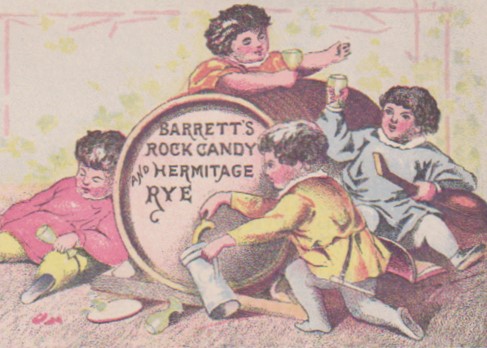What is Rock & Rye? Simply put, it is a rectified rye whiskey. Some Pennsylvanians may remember Rock & Rye from our childhoods as a medicinal treatment for a cold that our grandparents insisted upon. The most commonly available brand on the market was, and likely still is (even with so many new versions of it being made by new distilleries), Jacquin’s Rock & Rye. Jacquin’s version had little pieces of fruit floating in the bottle, but that was a brand choice, not a normal characteristic of rock and rye. In fact, rock and rye IS a category of spirit listed in the TTB’s standards of identity as a “Liqueur/Cordial.” It is described as follows:
“Liqueur/Cordial with the predominant characteristic flavor of rye whisky made with not less than 51% on a proof gallon basis rye whisky, straight rye whisky or whisky distilled from rye mash, rock candy or sugar syrup and with or without the addition of fruit, fruit juices or other natural flavoring materials, bottled at not less than 24% alcohol by volume (48 proof). Wine may be used but if used may not exceed 2½% by volume of the finished product.”
The fact that Rock and Rye was considered medicinal decades ago to our grandparents was nothing new, however. Jacquins brand Rock and Rye has been around since the 1884, but they were a bit late to the game. By the time Jacquins released their version of Rock and Rye, there were countless iterations of Rock and Rye available in almost every pharmacy in America. It was a very common cold remedy- so much so that even as states began to embrace temperance and outlaw spirits through local option laws, Rock and Rye was often given a pass.
In 1883, there were arguments for and against the exclusion of Rock and Rye from liquor bans taking place in Congress. Rock and Rye producers had been excluded from paying taxes that rectifiers of liquor had been forced to pay because it had been deemed a “patent medicine.” Rock and Rye was considered so valuable to American citizens that Senators stood up and demanded that it be excluded from being considered a “rectified beverage.” So, many of the people that despised alcohol and promoted temperance began to realize that some products made with whiskey may deserve special consideration. Perhaps some alcohols should be excluded from being banned.
I’ve read a few more recent accounts saying that Rock an Rye was given status as a category standard of whiskey in 1883, but I’ve seen no proof of that. Standards of identity as we recognize them today, weren’t established until the 1930s. The interesting thing is that the US Pharmacopeia, which had been established in the 1830s, was content to consider Rock and Rye medicinal. It was the public and their representatives that gave that belief credence. The belief that Rock and Rye was medicinal (with the arguments made for it by government officials) created a precedent that would be revisited 40 years later.
We may think of Rock and Rye as being an odd concoction of fruit, sugar and whiskey that our grandparents swore by, but, in truth, it may have been much more valuable to the history of American whiskey than it’s given credit for. The fact that people believed whiskey was medicinal had its foundations in products like Rock and Rye.

